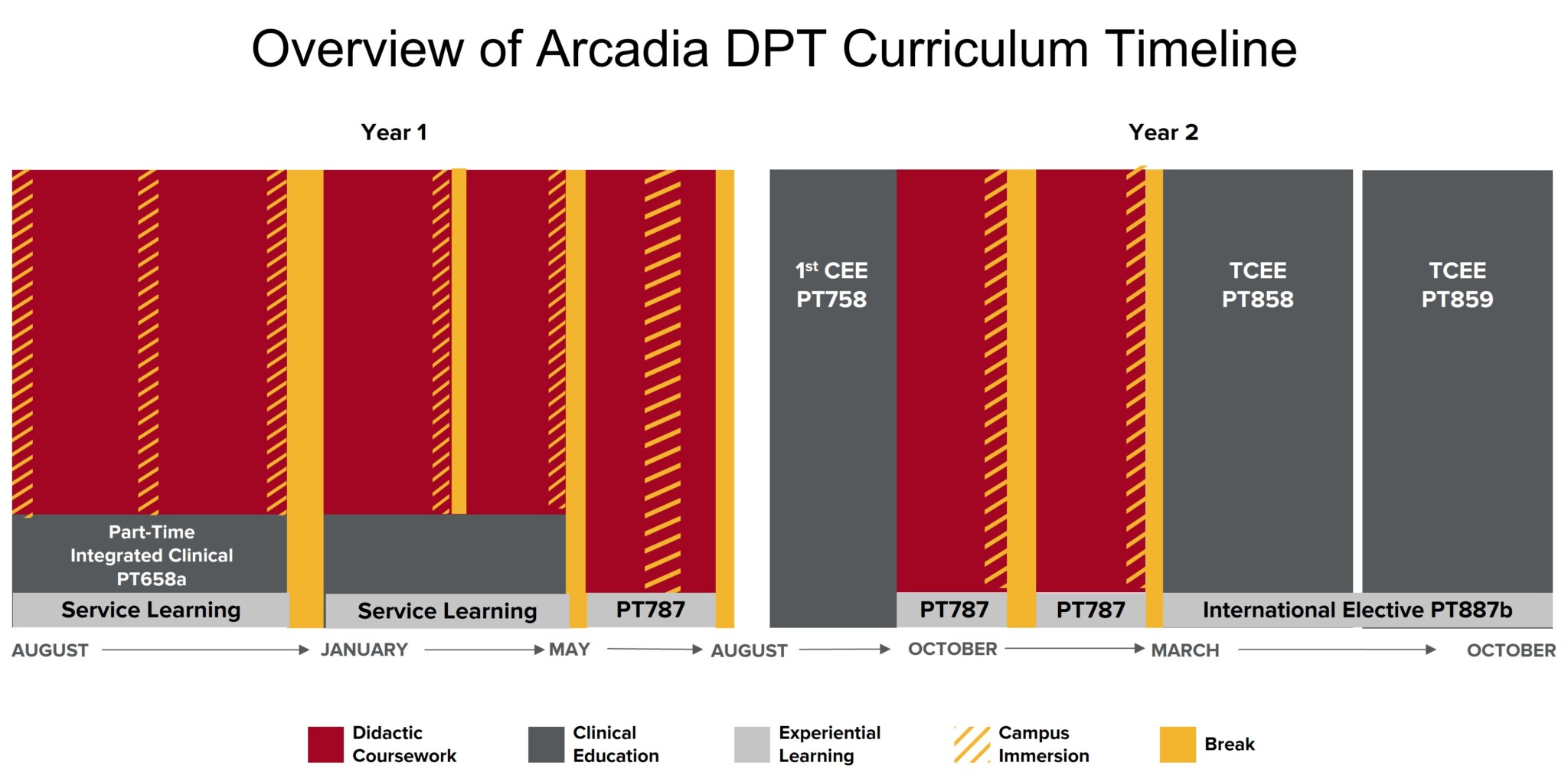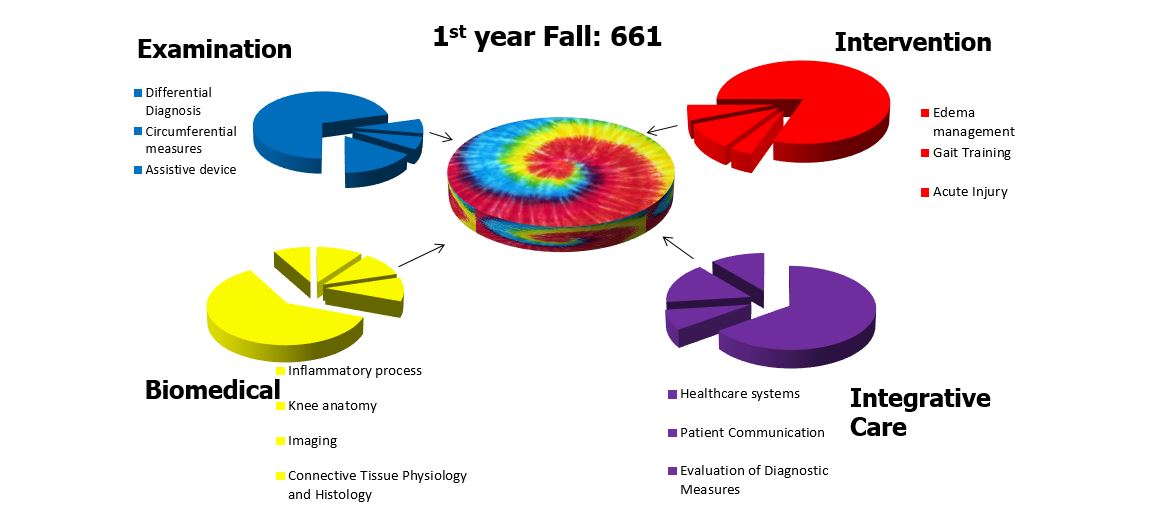Innovative Patient-Centered Curriculum
The ultimate goal of the Doctor of Physical Therapy (DPT) program is to graduate the next generation of clinicians who are solidly grounded in the fundamentals of physical therapy and competent in critical thinking and problem-solving.
Critical thinking and the use of evidence for making clinical decisions is emphasized throughout the curriculum. Relevant literature is considered in each course with the goal being graduates who use current evidence in their practice of physical therapy. During the final clinical affiliation, students develop and deliver an in-service to the clinic as their capstone project, which will be evidence-based on a relevant aspect of physical therapy practice. In addition, students may also opt to participate in an elective research course, which culminates in a platform presentation delivered to the University community just prior to graduation.
Arcadia’s accelerated, 26 month program integrated didactic, experiential, and clinical education throughout the year.

Patient-Based Courses
Structure of PT Curriculum: 21 case-driven courses
The curriculum is organized into 21 patient-based courses between one and four weeks in duration. Each course is team-taught by our faculty and integrates knowledge from every practice area of physical therapy. The curricular content addresses aspects of injury prevention, recovery, and rehabilitation. Students learn to apply the principles of physical therapy practice to all patient populations and conditions: from the young child to the older adult, from fractures to traumatic brain injury. Each course is designed so that students can immediately apply the material to the patient case central to each, allowing them to develop their skills continuously as they advance through the program.
Students will spend time weekly in the Anatomy Resource Center during the first year of the program and have opportunities to review cadaver anatomy during the second year of the program. Our curriculum integrates the cadaver anatomy with the patient case(s) being covered in a given course and allows the students to apply the regional anatomy directly to relevant clinical examination and treatment.
Example:
Focus: movement system impairments associated with motion due to acute musculoskeletal injury.
Patient Case #1: The patient reports falling while playing recreational soccer on campus. They reported immediate pain and edema around the knee with an inability to bear weight through the affected leg.
Patient Case #2: The patient reports they tripped and fell stepping up a curb on their way to work. They are able to bear weight through the involved leg, but complain of significant ankle pain, edema, and ecchymosis.


